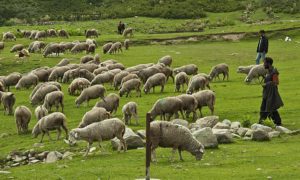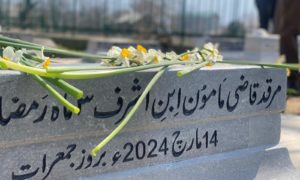In the comparative interstate perspective on various development indicators, Kashmir’s growth story—other than its elusive roads and deadline-missing flyover—largely remains a work in progress.
The concept of development is often measured by the usual parameters of infrastructure, roads or technology. It includes literacy, human development index, GDP, life expectancy, among others.
For instance, despite developing world-class roads and traffic infrastructure, China is losing its major citizenry to the ‘killer roads’ every year. The ability of regions and their regimes to safeguard the lives itself comes in an ambit of development.
So how developed is Kashmir when it comes to meeting the different growth parameters.
Literacy

Official records rank Kashmir at 30th spot in literacy among the 36 States and Union-Territories of India. However it has increased from 55.52 % in 2001 to 68.74 % in 2011, a decadal transition of 13.22, which is an appreciable advance, a far greater quantum of improvement than competitively comparable states as Rajasthan, Madhya Pradesh, and Chhattisgarh.
Meanwhile, the Eastern Hindi Heartland has fared slightly better than Kashmir in terms of decadal progress, in spite of having lower literacy values. Tripura has shown the most remarkable advance, of all, at 14.56 percent.
All-India average in 2011 was 74.04, significantly higher than that of J&K, but well within reach of one stable, well-planned, steep 5 year policy implementation or two.
Kashmir has an apparent gender disparity as regards literacy, at a difference of 20.25 %, evidently higher than the all-India average of 16.68.
However, Kashmir’s literacy is more equitable than or insignificantly different from (comparable to) about seven states.
In the decadal census, tentatively due in two years, Kashmir can be reasonably expected to surpass Madhya Pradesh and Chhattisgarh, hands-down, and also perhaps overtake Assam, while facing stiff neck-to-neck contest from a nimbly rising Jharkhand, to resultantly climb to the 27th or 28th tier.
Life Expectancy

As per records, J&K has the second highest life-expectancy of all States in India, at 72.6, second only to Kerala. It’s also preceded by the National Capital Territory of Delhi. This is significantly higher than the all-India average of 67.9.
J&K is followed by the Himalayan alpine and sub-alpine states of Uttarakhand and Himachal Pradesh respectively, alluding to the possible involvement of a climatic and semblance-based factor to longevity.
Per capita GDP

Under a considerable lack of infrastructure, and whilst coping with arbitrary resource diversion, in another stark testimony to the prowess, perseverance, and tenacity of labour and endeavours of the Kashmiri folk, J&K ranks a decent 24, among the various evaluated 33 States and UTs of India, preceding or equalising much of the Hindi Heartland.
West, North and South India perform conspicuously, remarkably and sizeably better than Eastern, Central and North-Eastern India.
The state’s NSDP per capita (Nominal) was INR 86,108 (US$1,200) in 2017-2018 while its per capita purchasing power parity was INT $4,850. The Indian national figure were INR 112,835 (US$1600) and INT$6,375, respectively.
For the sake of comparison, J&K fares significantly better than Bangladesh, while lagging a good deal behind Pakistan.
Human Development Index (HDI)

HDI is the composite index that takes into consideration Life expectancy, Education and Per capita income.
In terms of HDI, J&K ranks 17 amongst the analysed 36 States and UTs of India. At 0.684, it exceeded the all-India average of 0.640 (in 2018).
In this regard, it’s comparable to Iraq, and in absolute terms, (the numeral) is deemed “moderate-high” HDI. Excluding the UTs, J&K ranks at a respectable 11th.
Ease of Doing Business

Ease of doing business index is a quantification to measure the annual accessibility and facultative facilitation of performing business activities. For the ratification procedure pertaining to Indian states, it’s based on the completion percentage scores of action items, points annual Business Reforms Action Plan (BRAP) under the Make-in-India initiative.
Following the implementation of systematic official evaluation of the same, there now exists stiff-competition among the Indian states ranked by ease of doing business criterion to improve their current ranking on the ease of doing business index.
This ranking of states has been done by World Bank since 2015 and facilitated by the Ministry of Personnel, Public Grievances and Pensions of Government of India based on the progress of states in completing annual reform action plan covering 8 key areas. India hopped to the 100th place out of 190 countries in the World Bank’s 2017 ease of doing business index, from the plinth of 130th in the 2016.
Traversing a quantum leap from being ratified a meagre 05.93 (29/32) to a significant 33.05 (22/36), albeit still technically classified and termed as a “slow-mover”, J&K surprisingly exceeds Delhi, quite a feat in its own right, albeit lagging behind most of the Indian mainland.
In comparison of numerals, J&K is far behind even those that immediately supersede it, including a Communist-ruled Kerala, and the destitute Bihar and West Bengal.
Like this story? Producing quality journalism costs. Make a Donation & help keep our work going.








